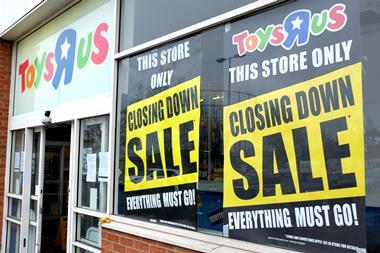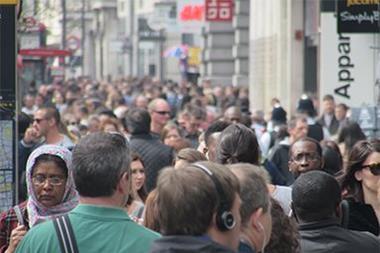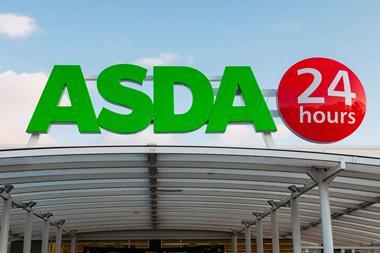Retail sales edged up in February despite the ’perfect storm’ of softening consumer demand, rising costs and structural changes within the industry.
Overall retail sales advanced 1.6% (0.6% on a like-for-like basis) in the four weeks to February 24, according to the latest data from the BRC and KPMG.
This was largely driven by food spending, which grew 2.8% like-for-like in the three months to February 24 – the highest increase since October 2012.
Meanwhile, non-food like-for-likes declined 1.1%, prompted by a 3.3% drop in physical store sales.
Ecommerce spending continued to outpace in-store, with non-food growing 6.4%.
This corresponds to steady progression in online penetration: 21.1% in February 2018, compared with 20.5% in February 2017.
BRC chief Helen Dickinson cited inflation, combined with “weak growth in household earnings”, as the cause behind the prolonged non-food stagnation.
“The fact is that consumers want to spend, they just don’t have the resources to do so”
Helen Dickinson
She said: “There’s little sign that consumer confidence, rather than financial reality, has much to do with the current weakness in spending.
“Furniture, often considered the bellwether of consumer confidence, actually saw sales improve in February as shoppers took advantage of credit facilities offered by retailers.
“The fact is that consumers want to spend, they just don’t have the resources to do so.”
Dickinson predicted that there would be an increase in spending on non-essentials, as price pressures from the drop of the pound ease.
However, she said this was “likely to come slowly”, along with a slight pick-up in wage growth.
“Crucial for consumers and retailers over the coming months will be a successful outcome to trade negotiations, ensuring that amidst the current difficulties, they won’t be facing further increases in costs from new tariffs on the everyday goods we import from the EU,” Dickinson said.
KPMG head of retail Paul Martin dubbed February’s retail performance as “quite the achievement” amid a “perfect storm” of “softening consumer demand, rising costs for retailers” and “ongoing structural changes within the industry”.
However, he added: “The retail shakeout will gather further momentum in the coming months, and retailers with large physical store estates are particularly under pressure.”
“It’s not all doom and gloom though; a number of retailers are bucking the overall trend by focusing on a differentiated proposition while remaining relevant to the customer.”




















No comments yet